One of the most remarkable creatures, dogs have well adapted teeth to fulfill the requirements of their natural role of scavengers. Fangs, incisors, premolars and molars, the civilized pet dog has them all just like its wilder members of the species.
How many teeth do dogs have?
Altogether, dogs have 28 baby teeth and 42 adult teeth in most breeds while there may be a few variations in others. These include fangs to grab and cut, incisors to nibble, premolars to tear and molars to crush bones!
Baby teeth
The baby teeth start to come out in the third week and are usually all there at six weeks. At around four months, the baby teeth start shedding and are replaced by the adult teeth. This can be a frustrating time for your puppy and it will clamp its mouth on whatever is within its reach. It would be advisable to keep your favorite sneakers out of its reach at this time! Your puppy may have some or all of the symptoms of teething – irritability, drooling, and variations in appetite.
Adult teeth
The incisors will come in first, followed by the canines and then the premolars. The molars come in last at seven months. The adult teeth have to last the rest of your dog’s lifetime and knowing more about them and how to keep them healthy is your responsibility.
Incisors
The typical dog has 6 incisors each on the lower and upper jaws. These are used nibble meat shreds from bones and for grooming. Dogs groom themselves and others as a form of bonding and greeting. Mutual grooming is a way in which dogs maintain order in the pack. Submissive and dominant dogs perform grooming but the order and solicitation is quite precise. The dog with a dominant position in the pack can deliver or seek grooming at his desire, whereas the passive dog has to wait to be approached or asked. You could probably learn a lot about your dogs by watching their grooming session.
Canines
The scary teeth we typically observe in dogs are the canines. They bring to mind the images of wild and ferocious creatures and are often responsible for the fear of dogs in most people. Even mild-natured dogs tend to display their canines a lot. Dogs use their canines to hold things and also to attack or defend when needed.
Premolars
Behind the canines, dogs have four premolars on each side of both, the lower and upper jawline. The teeth are used for shearing and ripping up large chunks of flesh while eating their prey. While dogs do not have to hunt for survival any more, their eating practices are still similar to those of wolves and they grab the meat using their premolars and tear it off the bones. They also use them to chew bones and chewable dog toys.
Molars
The two molars on your dog’s top jaw and three on the bottom jaw are used to crush food. Wolves use them to crack large bones, while your dog uses them for finishing off the large dog biscuits you give it as treats.
Tooth problems
Just like most people, your dog may also have tooth problems that may range from tooth decay to baby teeth that have been retained. Your pet dog’s mouth can remain healthy if its teeth are clean. You can make sure that this happens by checking its teeth periodically, and by providing biscuit treats, toys and chew toys so that your dog gets sufficient exercise for its jaws. It is also important to use kibble as a steady diet.
Dogs also have problems if the baby teeth roots are not absorbed when the adult teeth come out. If this does not happen or takes too long, the baby teeth retained may lead to malocclusion. This in turn causes tooth decay and other issues.
Dog bites
When your dog closes its mouth, the upper jaw closes on the lower jaw in a particular manner, which is your dog’s bite. In many breeds this is known as the scissors bite as the top jaw overlaps the lower jaw and only touches the incisors in the lower jaw. This helps in preventing wear and tear for the incisors, while keeping the alignment of the teeth in place. If the incisors come edge to edge, your dog has a level bite which is also acceptable.
Tooth decay
Most dogs don’t develop tooth cavities; however, this is likely if your dog’s diet has too many soft foods which may leave food particles between teeth or inside the gum pockets. This leftover food may cause gum infections that lead to soft gums and gum recession. A symptom of this can be foul breath and you must take your dog to the vet if this happens. If not dealt with promptly, your dog may lose a few teeth.
Another issue is tartar that can build up, causing gum disease and then loss of teeth. This issue increases as your dog gets older. If the issue becomes very serious, your dog may have to be sedated for the cleaning procedure. You can prevent this be using appropriate dog foods and brushing its teeth regularly.
How to brush your dog’s teeth at home
It’s best to regularly look inside the dog’s mouth and check your pet’s gums and teeth. It’s recommended to brush your dog’s teeth daily. Do it after your dog has had a decent exercise and is calm and relaxed for the procedure.
Don’t overdo it the first time. Start gently and slowly and stop if your pet gets agitated. You can increase the time when he gets used to it. Give your dog a treat afterwards.
Use a soft bristled toothbrush. Let your dog lick a little bit of the toothpaste to get him used to the flavor. Lift your dog’s lip and use a gentle circular motion to brush his gums and teeth. Back upper molars and canines tend to build up tartar so make sure to reach back there and clean these teeth well.
Don’t use regular human toothpaste. Most of them contain fluoride which is extremely toxic to dogs. You can buy toothpastes especially formulated for dogs at most pet stores. These toothpastes have dog-friendly flavors like poultry or peanut butter which make them more appealing to dogs. Additionally, don’t use any salt or baking soda to clean your dog’s teeth. These ingredients are also harmful to dogs.
Conclusion
You now know how many teeth do dogs have and all about how you must help your dog to retain a healthy set of teeth. A dog’s teeth can intimidate people but you must train it to use them wisely and never for controlling people.
References:
http://www.dogster.com/lifestyle/how-many-teeth-do-dogs-have-canine-teeth-dog-health-facts
http://www.fidosavvy.com/puppy-teeth-information.html
http://pets.webmd.com/dogs/guide/tips-better-dental-health-dogs
https://www.cesarsway.com/dog-care/dental-care/7-tips-for-doggie-dental-care
http://pets.webmd.com/healthy-dog-teeth-10/slideshow-brushing-dog-teeth
Image by : https://www.flickr.com/photos/168902888@N08/48319294702/

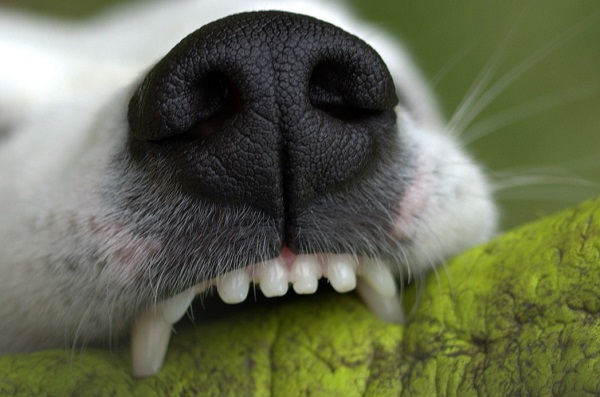
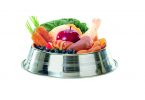
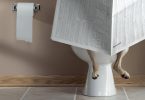
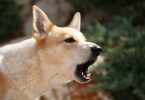
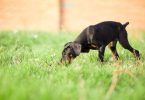
Great informative read. I learned all about how dog’s use their teeth and mouth as well as how many teeth they actually have.
It’s very important to know how to clean their teeth properly as a dog owner. Brushing their teeth is a great way to deal with dog plaque removal. Other options can be simple treats recommended by veterinarians and inexpensive chew toys which are a great way to keep them entertained, happy and healthy!
This is a nicely written article, especially helpful on how to brush your dog’s teeth and letting the readers know not to use normal human toothpaste on dogs.